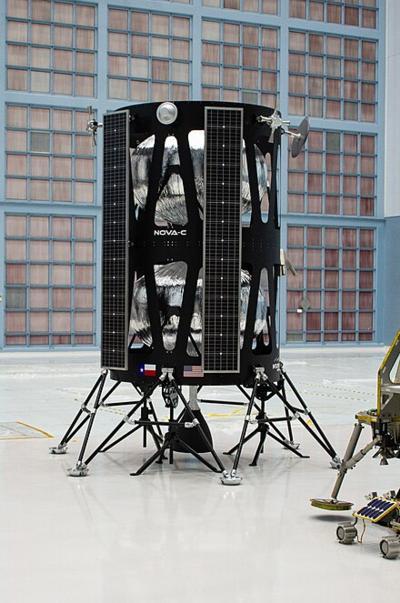Thu, Feb 29, 2024
Safety Switches Left On, Laser Rangefinders Left Off
The Odysseus Lunar Lander didn't stick the landing when touching down on the Moon's surface, starting off mankind's return to Luna in an inauspicious manner.

The IM-1 Intuitive Machine lander couldn't accurately gauge the distance to the surface since it was missing some of its rangefinding lasers, though some panicked, last-minute software sought to make use of a LiDAR test bed equipped on the ship in their place. In the end, the software was moderately successful, allowing Odysseus to determine altitude above the surface on its way down, but an unexpected and unfortunate amount of sideloading resulted in the lander toppling over on its side. It's now just a matter of time until Odysseus ends its service, bereft of the full energy-gathering capacity of an unfolded solar array.
The mission is a lesson of sorts, as the world once again seeks to re-learn how to land on the moon. Odysseus was the first attempt from the firm Intuitive Machines, from a class designated the Nova-C by their in-house nomenclature. Its mission is to deliver small payloads to the moon, with Odysseus, or IM-1, being the first of the series to begin the mission. Odysseus was the first American spacecraft to perform a soft, controlled landing onto Luna in more than half a century, making its whiffed dismount off the orbital pommel horse a little embarrassing for the nation at large. It does save a bit of face to remember that the lander wasn't exactly representative of NASA as a whole, however, being a privately operated and established spacecraft.
Overall, it's a learning experience for all involved - for one, IM-2 engineers will remember to shut off the safety cutout for the rangefinding lasers when they ready it for launch. The systems had been specifically shut down while Odysseus was on the ground as a protective measure against ocular damage, and their reactivation lost in the hurried shuffle of pre-flight prep. It's not quite clear exactly how much blame the deactivated sensors hold for the ultimate landing position of Odysseus, but it appears that the team had to make the best with the tools they had. The lander had carried a dozen payloads in all, 6 instruments from NASA projects or test programs. The other 6 were private payloads, ranging from useful tech like EagleCam, a student-made camera system, to the inane, a series of steel balls included as an art exhibit. The lander wasn't expected to last much longer beyond February 27th, starved of light for its solar panels as it headed into the long lunar night.
More News
19-Year-Old Pilot Was Attempting to Fly Solo to All Seven Continents On his journey to become the first pilot to land solo on all seven continents, 19-year-old Ethan Guo has hit a >[...]
From 2017 (YouTube Edition): A Quality LSA For Well Under $100k… Aeroprakt unveiled its new LSA at the Deland Sport Aviation Showcase in November. Dennis Long, U.S. Importer>[...]
Hazardous Weather Information Summary of significant meteorological information (SIGMET/WS), convective significant meteorological information (convective SIGMET/WST), urgent pilot>[...]
Aero Linx: Historic Aircraft Association (HAA) The Historic Aircraft Association (HAA) was founded in 1979 with the aim of furthering the safe flying of historic aircraft in the UK>[...]
"We would like to remember Liam not just for the way he left this world, but for how he lived in it... Liam was fearless, not necessarily because he wasn't afraid but because he re>[...]
 TikToker Arrested After Landing His C182 in Antarctica
TikToker Arrested After Landing His C182 in Antarctica Classic Aero-TV: Versatile AND Practical - The All-Seeing Aeroprakt A-22 LSA
Classic Aero-TV: Versatile AND Practical - The All-Seeing Aeroprakt A-22 LSA ANN's Daily Aero-Term (06.27.25): Hazardous Weather Information
ANN's Daily Aero-Term (06.27.25): Hazardous Weather Information ANN's Daily Aero-Linx (06.27.25)
ANN's Daily Aero-Linx (06.27.25) Aero-News: Quote of the Day (06.27.25)
Aero-News: Quote of the Day (06.27.25)



